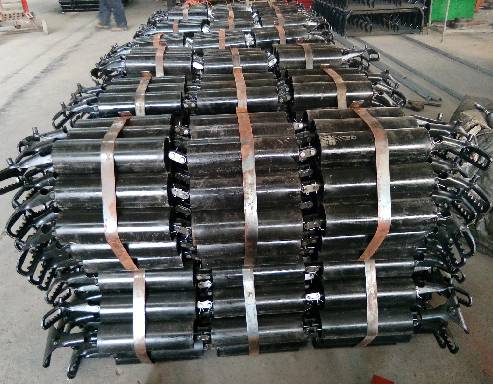 Afrikaans
Afrikaans  Albanian
Albanian  Amharic
Amharic  Arabic
Arabic  Armenian
Armenian  Azerbaijani
Azerbaijani  Basque
Basque  Belarusian
Belarusian  Bengali
Bengali  Bosnian
Bosnian  Bulgarian
Bulgarian  Catalan
Catalan  Cebuano
Cebuano  Corsican
Corsican  Croatian
Croatian  Czech
Czech  Danish
Danish  Dutch
Dutch  English
English  Esperanto
Esperanto  Estonian
Estonian  Finnish
Finnish  French
French  Frisian
Frisian  Galician
Galician  Georgian
Georgian  German
German  Greek
Greek  Gujarati
Gujarati  Haitian Creole
Haitian Creole  hausa
hausa  hawaiian
hawaiian  Hebrew
Hebrew  Hindi
Hindi  Miao
Miao  Hungarian
Hungarian  Icelandic
Icelandic  igbo
igbo  Indonesian
Indonesian  irish
irish  Italian
Italian  Japanese
Japanese  Javanese
Javanese  Kannada
Kannada  kazakh
kazakh  Khmer
Khmer  Rwandese
Rwandese  Korean
Korean  Kurdish
Kurdish  Kyrgyz
Kyrgyz  Lao
Lao  Latin
Latin  Latvian
Latvian  Lithuanian
Lithuanian  Luxembourgish
Luxembourgish  Macedonian
Macedonian  Malgashi
Malgashi  Malay
Malay  Malayalam
Malayalam  Maltese
Maltese  Maori
Maori  Marathi
Marathi  Mongolian
Mongolian  Myanmar
Myanmar  Nepali
Nepali  Norwegian
Norwegian  Norwegian
Norwegian  Occitan
Occitan  Pashto
Pashto  Persian
Persian  Polish
Polish  Portuguese
Portuguese  Punjabi
Punjabi  Romanian
Romanian  Russian
Russian  Samoan
Samoan  Scottish Gaelic
Scottish Gaelic  Serbian
Serbian  Sesotho
Sesotho  Shona
Shona  Sindhi
Sindhi  Sinhala
Sinhala  Slovak
Slovak  Slovenian
Slovenian  Somali
Somali  Spanish
Spanish  Sundanese
Sundanese  Swahili
Swahili  Swedish
Swedish  Tagalog
Tagalog  Tajik
Tajik  Tamil
Tamil  Tatar
Tatar  Telugu
Telugu  Thai
Thai  Turkish
Turkish  Turkmen
Turkmen  Ukrainian
Ukrainian  Urdu
Urdu  Uighur
Uighur  Uzbek
Uzbek  Vietnamese
Vietnamese  Welsh
Welsh  Bantu
Bantu  Yiddish
Yiddish  Yoruba
Yoruba  Zulu
Zulu Different Types of Pulleys Used in Conveyor Belt Systems and Their Applications and Benefits
Types of Pulleys in Conveyor Belts
Conveyor belts are vital components in various industries, providing an efficient means of transporting materials over both short and long distances. A critical part of the conveyor system is the pulley, which plays a significant role in the operation and efficiency of the conveyor belt. Understanding the different types of pulleys used in conveyor systems is essential for selecting the right component for specific applications and ensuring optimal performance.
1. Drive Pulley
The drive pulley is one of the most essential components of a conveyor belt system. It is located at the head of the conveyor and is responsible for driving the belt forward. The drive pulley is typically connected to a motor through a series of gears and pulleys, which allows it to rotate and move the belt. This type of pulley can be cylindrical or crowned, with the crowned type having a slightly raised center to help keep the belt aligned during operation. The contact between the drive pulley and the conveyor belt is crucial for effective power transfer, so materials used for the surface are often selected for their frictional properties.
2. Idler Pulley
Idler pulleys are critical in supporting the conveyor belt and maintaining its tension. Positioned along the length of the conveyor, they help to guide the belt and prevent sagging. Unlike the drive pulley, the idler pulley does not drive the belt but provides the necessary support to ensure that materials move smoothly. Idler pulleys can come in various designs, including flat, troughing, and return types. Troughing idlers, for example, feature a concave shape that helps in guiding bulk materials and improving the efficiency of the conveyor system.
3. Tail Pulley
types of pulley in conveyor belt

Located at the opposite end of the drive pulley, the tail pulley is used for tensioning the conveyor belt. It ensures that the belt maintains the appropriate tension, which is critical for proper operation and longevity of the belt. The tail pulley can also be designed with a rubberized surface to enhance the grip on the belt. In some cases, the tail pulley may include a self-cleaning mechanism that prevents material buildup, which can lead to operational inefficiencies or belt damage.
4. Snub Pulley
The snub pulley plays a minor, yet significant role in conveyor belt systems. It is used to increase the angle of wrap on the drive pulley, thereby enhancing the friction and improving the drive's ability to engage with the belt. This added friction helps prevent slippage, especially in systems where load variations are prevalent. By allowing the conveyor belt to maintain better contact with the drive pulley, snub pulleys ultimately contribute to smoother operations and increased efficiency.
5. Take-Up Pulley
Take-up pulleys are essential for adjusting and maintaining the tension in the conveyor belt. They are typically located at the tail end of the conveyor system and can be either manual or automatic in operation. By adjusting the take-up tension, operators can compensate for belt elongation or shrinkage that occurs due to material weight and environmental factors. Adequate tension is crucial to prevent issues such as belt slippage and misalignment, which can lead to increased wear and potential system failures.
Conclusion
Understanding the various types of pulleys in conveyor belt systems is vital for those involved in industrial operations. Drive, idler, tail, snub, and take-up pulleys, each serve distinct functions that contribute to the efficiency and reliability of conveyor systems. Selecting the appropriate pulley type for a specific application can enhance material handling processes, reduce operational costs, and increase the durability of conveyor components. Proper maintenance and monitoring of these pulleys will further ensure optimal performance, thus fostering a more productive work environment. In summary, the choice of pulleys is a crucial factor in the effective operation of conveyor belt systems across various industries.
-
Revolutionizing Conveyor Reliability with Advanced Rubber Lagging PulleysNewsJul.22,2025
-
Powering Precision and Durability with Expert Manufacturers of Conveyor ComponentsNewsJul.22,2025
-
Optimizing Conveyor Systems with Advanced Conveyor AccessoriesNewsJul.22,2025
-
Maximize Conveyor Efficiency with Quality Conveyor Idler PulleysNewsJul.22,2025
-
Future-Proof Your Conveyor System with High-Performance Polyurethane RollerNewsJul.22,2025
-
Driving Efficiency Forward with Quality Idlers and RollersNewsJul.22,2025





























